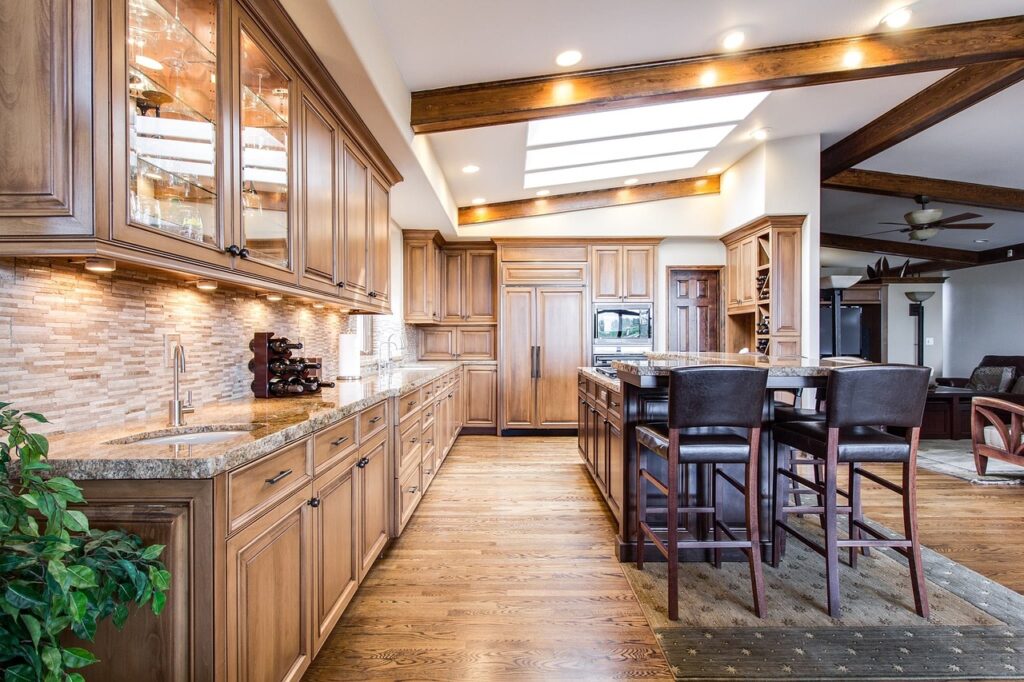What to Expect During a Roof Replacement: A Step-by-Step Guide

Replacing a roof is a significant investment that enhances both the protection and value of a home or commercial property. While many property owners understand the importance of a roof replacement, the process itself can feel overwhelming. From selecting materials to managing disruptions, knowing what to expect can make the experience smoother and stress-free.
A well-executed roof replacement not only resolves existing issues such as leaks and aging materials but also improves energy efficiency and enhances curb appeal. However, without proper preparation and a clear understanding of the process, unexpected delays or challenges can arise. Being informed about each stage helps homeowners and business owners feel confident in their decisions.
Pinnacle Roofing Group ensures that every roof replacement is completed efficiently and with high-quality craftsmanship. By following a structured process, property owners can expect a seamless transition from an old roof to a durable, long-lasting new system. Here’s what happens during a roof replacement from start to finish.
1. Initial Inspection and Consultation
Before replacing a roof, a professional inspection is necessary to assess the current condition and determine the best course of action.
What Happens During the Inspection:
- The existing roof is examined for damage, leaks, and structural issues.
- Measurements are taken to calculate material requirements.
- The inspector evaluates underlayment, decking, and ventilation to determine if repairs are needed.
What Homeowners Should Do:
- Discuss concerns about leaks, insulation, or previous repairs.
- Ask about material options and warranties for long-term protection.
- Request a detailed estimate outlining costs and project timeline.
Once the inspection is complete, a plan is created for the roof replacement, ensuring the right materials and installation approach are chosen.
2. Choosing Roofing Materials
Selecting the right roofing material is a crucial step, as different materials offer varying durability, aesthetics, and energy efficiency.
Popular Roofing Options:
- Asphalt Shingles: Affordable, widely used, and available in various colors.
- Metal Roofing: Long-lasting, energy-efficient, and resistant to extreme weather.
- Tile Roofing: Offers durability and a distinctive look, but requires strong structural support.
- Flat Roofing (TPO, EPDM): Common for commercial properties, providing energy efficiency and waterproofing.
Factors to Consider When Selecting Materials:
- Climate: Some materials perform better in extreme heat, heavy rain, or snowy conditions.
- Budget: Higher-end materials cost more upfront but may last longer.
- Aesthetic Appeal: Choosing a style that complements the home’s exterior.
Property owners should consult with their contractor to determine the best option based on durability, cost, and maintenance requirements.
3. Preparing the Property for Roof Replacement
A roof replacement involves a significant amount of work, and preparation ensures a smooth process with minimal disruptions.
How to Prepare for the Project:
- Move vehicles away from the house to provide space for materials and equipment.
- Protect outdoor furniture, landscaping, and fragile items from falling debris.
- Inform neighbors about the project to prepare for temporary noise and activity.
What to Expect on Installation Day:
- Roofing crews will arrive early with materials and equipment.
- Safety measures, such as tarps and plywood, will be set up to protect surrounding areas.
- The old roofing materials will be carefully removed.
Preparation helps reduce the risk of damage and ensures the process runs efficiently.
4. Removing the Old Roof
The first major step of the replacement is stripping away the existing roof down to the decking.
What Happens During Tear-Off:
- Shingles, underlayment, and flashing are removed.
- Roof decking is inspected for damage such as rot or mold.
- Any necessary repairs are made before the new materials are installed.
Why This Step Is Important:
- Ensures a solid foundation for the new roof.
- Identifies hidden structural issues that could cause problems later.
- Prevents moisture retention under the new materials.
While some homeowners may consider layering new shingles over old ones, a full tear-off provides the best long-term performance.
5. Installing the New Roofing System
Once the old materials are removed and the decking is prepared, the new roofing system is installed.
Installation Steps:
- Underlayment Installation: A waterproof barrier is applied to protect against moisture.
- Flashing and Ventilation: New flashing is placed around chimneys, vents, and valleys.
- Shingles or Roofing Material Installation: The main roofing material is secured in place.
- Ridge Caps and Finishing Touches: Additional protective layers are added to ensure durability.
Why Proper Installation Matters:
- Prevents leaks and water damage.
- Enhances wind resistance and durability.
- Ensures compliance with building codes and manufacturer warranties.
The entire installation process typically takes one to three days, depending on the roof size and complexity.
6. Post-Installation Cleanup
After the new roof is installed, a thorough cleanup is conducted to remove debris and restore the property to its original condition.
Cleanup Process:
- Removing nails, shingles, and leftover materials.
- Using magnetic tools to collect stray nails in the yard and driveway.
- Ensuring gutters and downspouts are clear of debris.
A professional roofing company will leave the property as clean as it was before the project started.
7. Final Inspection and Quality Check
Before the project is officially complete, a final inspection ensures the roof meets all quality and safety standards.
What the Final Inspection Covers:
- Checking for proper shingle alignment and fastening.
- Inspecting flashing and sealants for a watertight fit.
- Confirming ventilation systems are working correctly.
- Reviewing warranty information with the property owner.
Homeowners should take this opportunity to ask any final questions and discuss maintenance recommendations to extend the roof’s lifespan.
8. Long-Term Roof Care and Maintenance
A new roof is a long-term investment, and regular maintenance is key to keeping it in top condition.
Tips for Maintaining a New Roof:
- Schedule annual inspections to check for wear and tear.
- Keep gutters clean to prevent water buildup and leaks.
- Trim nearby tree branches to avoid damage from falling debris.
- Monitor attic ventilation to prevent moisture-related issues.
Proper care ensures that the roof lasts for decades, reducing the likelihood of premature repairs or replacements.
Final Thoughts
A roof replacement is a major home improvement project, but knowing what to expect makes the process easier to manage. From the initial inspection to the final quality check, each step is essential for ensuring a durable and reliable roofing system.
For homeowners and business owners planning a roof replacement, working with a trusted roofing company makes all the difference. Pinnacle Roofing Group takes pride in providing high-quality workmanship and a seamless experience, ensuring that every roof replacement is done efficiently and professionally. With the right preparation and expert installation, a new roof provides long-term protection, energy efficiency, and peace of mind.

Braxons Group: Liquidity Protocols for RWA and Yield Strategies — Bridging Real Assets with DeFi

Do I Need a Business License for My Ohio LLC

Unlocking Niche Audiences Through A Strategic Market Segmentation Service

Accelerating drug discovery through the DEL-ML-CS approach

AI in Marketing Is No Longer a Buzzword — It’s the Strategy

Acamento: A Complete Guide to Meaning, Usage, and Industry Relevance

The Solar Generator Revolution: Beyond Gas Guzzlers

Shuttergo: Revolutionizing Smart Window Solutions for Modern Living








